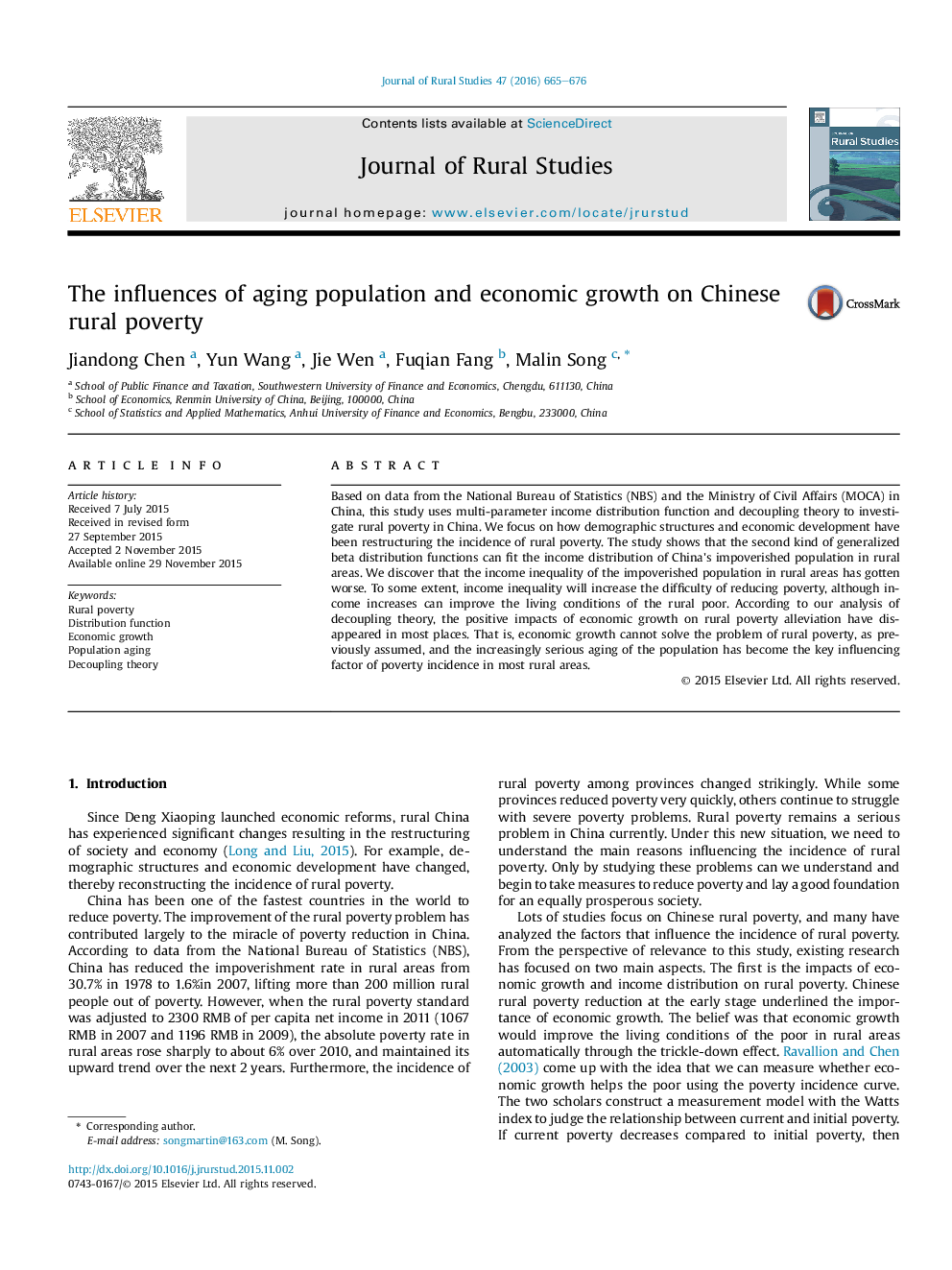| کد مقاله | کد نشریه | سال انتشار | مقاله انگلیسی | نسخه تمام متن |
|---|---|---|---|---|
| 6460198 | 159959 | 2016 | 12 صفحه PDF | دانلود رایگان |
- This paper integrates data to explore Chinese rural poverty.
- As a useful tool, GB2 fits Chinese rural income distribution very well.
- Decoupling model is employed to evaluate different factors on rural poverty.
- Economic growth cannot eradicate the rural poverty effectively.
- Aging population has become the key issue of Chinese rural poverty.
Based on data from the National Bureau of Statistics (NBS) and the Ministry of Civil Affairs (MOCA) in China, this study uses multi-parameter income distribution function and decoupling theory to investigate rural poverty in China. We focus on how demographic structures and economic development have been restructuring the incidence of rural poverty. The study shows that the second kind of generalized beta distribution functions can fit the income distribution of China's impoverished population in rural areas. We discover that the income inequality of the impoverished population in rural areas has gotten worse. To some extent, income inequality will increase the difficulty of reducing poverty, although income increases can improve the living conditions of the rural poor. According to our analysis of decoupling theory, the positive impacts of economic growth on rural poverty alleviation have disappeared in most places. That is, economic growth cannot solve the problem of rural poverty, as previously assumed, and the increasingly serious aging of the population has become the key influencing factor of poverty incidence in most rural areas.
Journal: Journal of Rural Studies - Volume 47, Part B, October 2016, Pages 665-676
